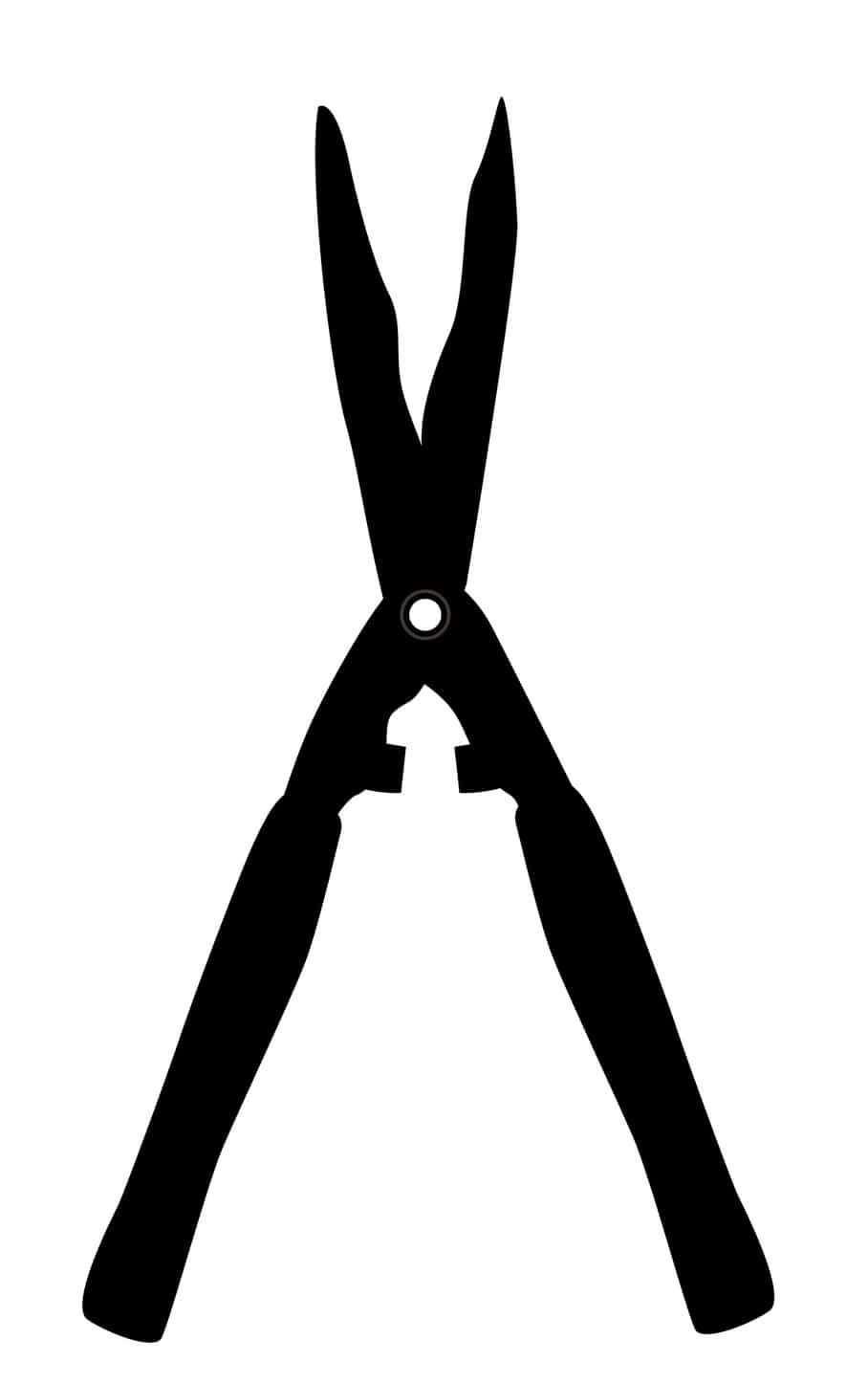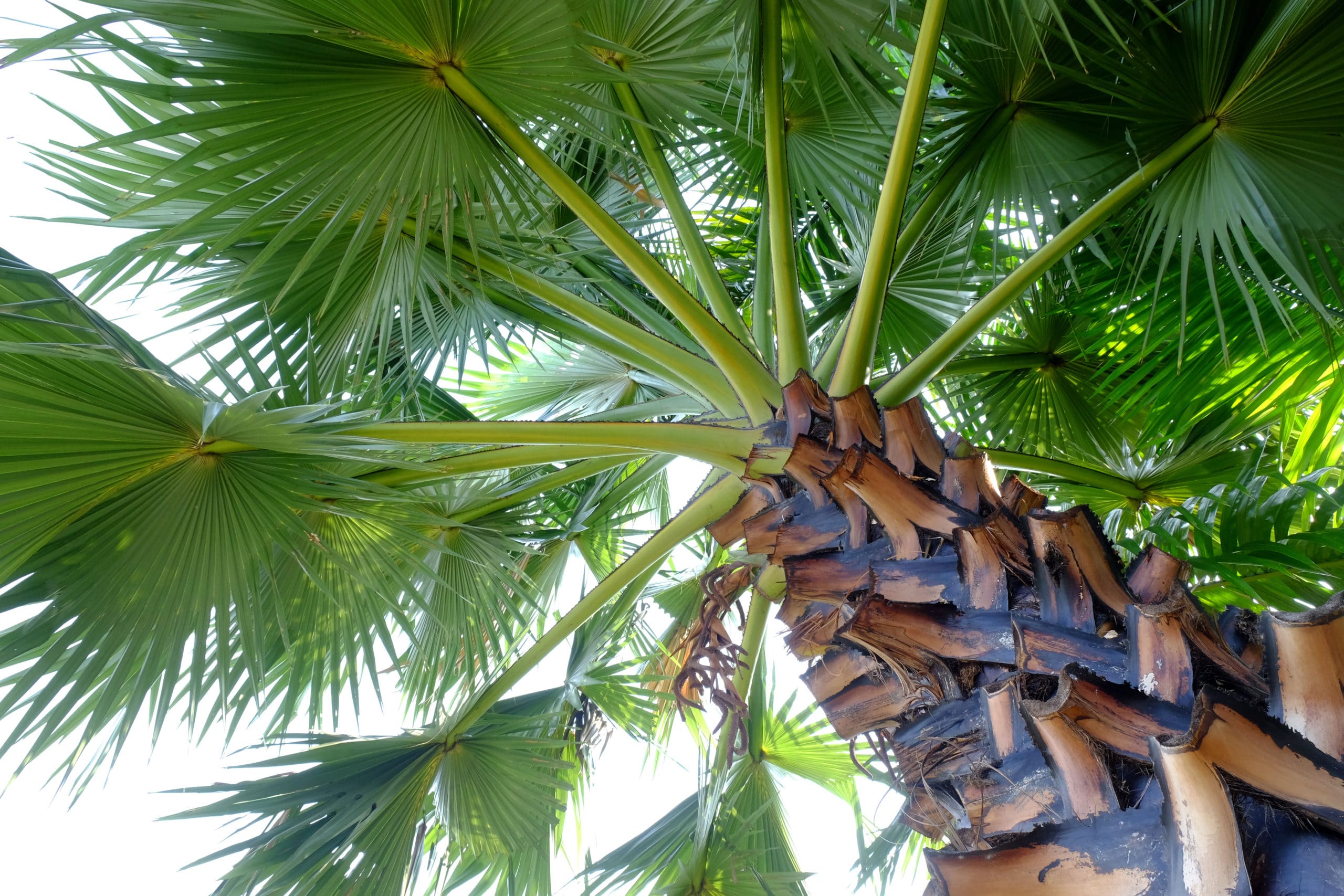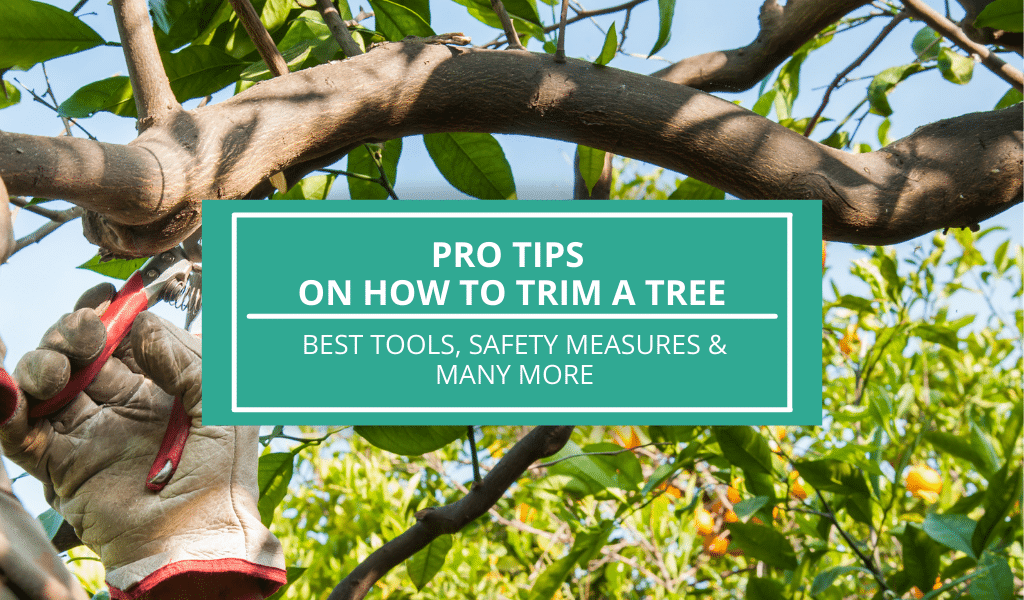While the idea of tree pruning can be intimidating to newbies, the good news is– anyone can easily trim a small tree given the right tools, proper research, and hard work.
Yes, you’ve read that right. Before you hop on Google to look for "how to trim a tree" queries, we'd still strongly advise leaving complicated and large pruning projects to a professional.
However, if you’re thinking about doing small-scale tree trimming involving branches and small trees– you can manage to do it all independently.
For your guidance, I’ll include a step-by-step tree pruning process in this article, along with some pro tips to help ensure an efficient and safe project.
Why Trim a Tree?
Before we proceed with the tree trimming project process, you must understand exactly why you should be trimming your tree.
Necessary Tools for Tree Trimming
Take note: you will need high-quality tools to ensure your tree trimming project will go as smoothly as planned. Sharp tools for garden pruning and trimming are crucial to make the process go as quickly as possible.
Do proper preparation by keeping your tools clean and sharp before you carry on with the project. You may think the consequences of dull tools are light, but any exposure to your trees may only damage them as dirty blades may affect the shrub’s open wounds or significantly shred its bark. As a result, you may leave your tree prone to pests and other diseases.
Here are some of the standard tools you’ll need in your arsenal:
Saw
To help you cut through wooden branches quickly, make sure to choose an efficient teeth design to pull off clean cuts.

Loppers
These tools are used to trim branches, stems, and twigs.

Hand pruners
To help you cut through wooden branches quickly, make sure to choose an efficient teeth design to pull off clean cuts.
Essential safety glasses and protective gloves
Before you shop for these necessary gear, it’s best to do a quick research on how to trim a pine tree (or any other tree in your yard for that matter) to get an idea if it needs you to follow any special, particular pruning techniques.
Fruit trees such as lemon or peach trees might need to be pruned once the fruits are ready for harvest. Other types, such as fig trees, have it trimmed in their early years to encourage new "fruiting wood." As a result, you can expect heavier produce yields for the next season.
Simple Ways to Trim a Tree
At some point, you probably considered trimming the trees in your yard by yourself– only to contemplate questions such as Am I allowed to cut this branch? Is this the right season to prune my tree? How many dangling twigs should I remove?
The first step in ensuring a successful tree trimming project is to know all the necessary steps you’re expected to follow. Let’s jump into the step-by-step process below for your reference!
1. Prune any suckers
What are tree suckers? These refer to the greenery that strongly resembles weed, commonly situated at your trunk's base. If left overlooked, they grow into branches that may only steal nutrients from your tree. It's advisable to get rid of any suckers as soon as you see them growing around. Make it your priority to give your tree a trim.
2. Get rid of dead or diseased branches
Next, ensure to cut any broken, dead, or infected branches. Doing so will significantly improve the general health of your tree. Once you get rid of the diseased branches, the following steps will be much easier to manage.
You will now have a clearer picture of what you're working with to be more precise with the spots you need to trim afterward.
3. Cut out hazardous branches
Aside from visually dead branches, you will also need to remove hazardous offshoots that are already touching your roof or hanging very low. These may become a safety hazard that may only cause you problems in the future when overlooked.
In some cases, you may only need to get an obstruction out of the way. Instead of discarding an entire limb, trimming smaller branches may do.
After a severe weather condition, damaged branches that are rendered weak will also need to be cut out– even if they are still thriving. They may only invite more pests to settle in the tree and hold water, serving as their breeding ground.
4. Trim intertwined branches
At this point, you already managed to clean up most parts of the tree successfully. There might be remaining branches that are either intertwined, overlapping, or rubbing against each other. If left that way, they may only damage the tree in the long run.
To avoid this problem in the future, opt to get rid of overlapping branches as early as possible. If you think it would be a waste, you may cut off the more damaged one out of the two branches (or the one that is smaller in size).
Safety Measures
If you need to...
Consider hiring a professional to do the job for you, especially if you lack previous experience in tricky and challenging pruning projects.
As previously mentioned, complicated pruning situations are better handled by an expert. Their expertise and advanced training can ensure a safe pruning project with no room for errors.
Small Branches and Trees vs. Large Branches
Now that you’re familiar with the basics of how to trim a tree– let’s take a closer look at the process. How about trimming small branches, small trees, or large branches?
You might be thinking: the process will undoubtedly vary on a case-to-case basis. Yes, that would be correct. Let's discuss the different approaches below.
Trimming Small Tree Branches

When trimming small tree branches, you need to remember that every cut you make will only encourage growth. Hence, it's better to make sure you cut the limbs at least ¼ inch above the outside-facing bud– the standard direction of new growth. Aim for a 45 degree angled cut to avoid damaging the tree.
Ensure your trimming tool is sharpened and clean before you attempt to cut. It would also help to locate the specific area first, so you have a solid idea of where you'll be trimming it down.
Aim to cut beyond the branch's collar so that you won't end up entirely cutting it off or leaving any stub behind. It refers to the area where the branch is located in a tree. While it is easily observable in other trees, look for a thick bark area, circle, or ridge if you have trouble finding it.
Skip branches that are currently growing in a straight, upward direction. Trimming those will likely leave a wound where water can settle– making the tree at risk of rotting in the long run.
If a branch is too long, it may also be a better choice to avoid trimming it. Doing so may only leave a long stub, making it hard for the tree to form a natural callus above the fresh wound.
Trimming Small Trees
The process of cutting a branch is the same when it comes to trimming small trees. However, there are other aspects you need to take into consideration.
First, count all the branches you plan to get rid of and the ones you want to keep in your tree. Pro tip: opt to keep the branches pointing at a 2 o'clock or 10 o'clock angle from the trunk.
The keyword here is planning. Formulate an efficient plan on the number of branches you want to trim– but don't go overboard. Do not remove more than 25% of your tree's canopy at a given time.
Get rid of all the visible clutter, from greenery growing at the base of your tree to dead twigs and branches. For younger trees, opt to trim limbs that are pitting against the leader branch.
Trimming Large Branches

If you’re having trouble cutting off large branches by yourself, follow these simple yet effective steps below:
Now that you’re well-versed with the different processes on how to trim a tree, you can now count on your knowledge to perform efficient and smart trimming. Believe in yourself, watch some demonstration videos on YouTube, and make those cuts to trim down your greenery!
9 Pro Tips on How to Trim a Tree
Depending on the scope of your tree trimming projects, you may be better off leaving large-scale trimmings to a tree care professional. They have the proper equipment as well as experience in getting rid of large branches safely.
However, if you’re planning to trim a single tree– such as a pine tree or palm tree in your yard, consider it the perfect opportunity to get into tree trimming. You will only need sharpened, standard tools we’ve previously listed above.
To help you achieve a successful tree trimming project, here are some other tips you need to keep in mind:
Tip # 1
Trim Your Trees Early
As a responsible homeowner, it is essential to keep a close eye on the trees growing on your property. Once you notice early signs of broken or dead branches, opt to have them removed as soon as possible.
If you want to get your new tree in excellent shape, you can postpone the trim until after the first winter season.
Regular trimming reduces any potential stress on your tree, and you will also be reducing the workload required on your end. In getting a beautiful, sturdy tree– you will need to start trimming from the very start.
Tip # 2
Choose the Best Season to Trim
Many homeowners are under the impression that the best time of the year for tree trimming is sometime during the fall– but this assumption may cause damage to your trees.
It would be best to save your tree care trimming during your tree's active growth seasons, particularly in the early spring.
You may also opt to trim during dormancy when your tree is entirely dormant during the winter. It will significantly lower the risk of pest infestation and other diseases as you leave your tree with easily exposed wounds.
If you live in mild climate states such as North Carolina, Texas, or Florida– you can pretty much trim your tree anytime during its winter dormancy period.
However, for states with harsher climates such as Minnesota, it is best to wait until the passing of the coldest winter weather for safety purposes.
Tip # 3
Take Immediate Action for Minor Trims
When it comes to minor trims, you may remove any visibly damaged or diseased branches any time of the year. Avoid doing it on intense rainy days or extreme humid weather, though.
If you wait for winter or fall to trim hazardous branches, chances are– you may leave your tree vulnerable to damage or infection. Keep in mind that there is never a wrong time for minor tree trimming, such as getting damaged branches out of the way.
Ensure to have your trimming blade dipped in a bleach solution (at least 20 percent) in each cut when dealing with diseased branches. It will help you avoid spreading any disease between cuts.
Tip # 4
Figure Out How to Trim Specific Trees
Perhaps the best pro tip we can offer is to spend some time on a quick "how to trim a tree" research, depending on which trees are on your property.
We'll list some famous examples below, including pine trees, fig-trees, lemon trees, palm trees, and peach trees.
Tip # 5
How to Trim a Pine Tree

Fortunately, pine trees are easy to maintain in general. They take on a naturally neat shape that will require minimal correction on your end. You may only need to trim your pine trees after a night of severe weather or random acts of vandalism.
Ideally, prune your pine tree during spring– but it's best to get rid of broken and intertwined branches as soon as possible. Though rare in pines, overlapping branches frequently rub each other and may potentially cause open wounds in your pine tree.
If you're keen on removing a particular branch, make sure to cut all the way back to the thickened collar area. For branches with a diameter thicker than an inch, move away from the trunk (at least one foot away) before cutting from the bottom about halfway through the branch's width.
Then, take another step back to cut from the branch's top to bottom parts. Ensure to cut off the stub flush afterward. Stray away from making a straight cut from top to bottom, as it may only strip the tree's bark once the branch falls.
Tip # 6
How to Trim a Fig Tree

Fig trees are best pruned during their dormant period in the winter. Remove any visible branches that are either dead or diseased. Branches that are growing outside the selected fruiting wood will also need to be discarded.
If there are persistent suckers on the base, opt to have them immediately removed as well. Trimming your fig tree will help you significantly improve the quality of your fig crop.
Cut off any secondary branches growing at less than a 45-degree angle from the main branches as well. If you leave it on its own, chances are it may gradually get too close to the trunk and will result in unsatisfactory produce.
Tip # 7
How to Trim a Lemon Tree

In trimming lemon trees, make sure to utilize only clean and sharp blades. You will also need safety gloves to avoid any harmful contact with the thorns.
While citrus wood is generally sturdy, its bark will be easy to cut in contrast. Avoid nicking your lemon tree by making cuts with the saw blade straight pointing towards it.
Make it a priority to preserve your tree’s branch collar, which usually appears as a wrinkled bark around the base of a large limb. It is considered as the tree’s branch defense zone– protecting it against any decay.
Tip # 8
How to Trim a Palm Tree

It's advised to trim or prune a palm tree during the spring. While dead, untidy fronds can be an eyesore– they give protection to your tree against harsh heat and cold weather.
Dead and decayed fronds, on the other hand, should be removed as soon as possible. Doing so will prevent breakage in your palm tree, as well as leaving no potential nesting areas for pets, including rats, scorpions, and other insects.
Prepare protective gloves and glasses for your palm tree trimming project. It's also best to wear long-sleeve shirts as well as heavy pants to ensure your safety. Start by removing any hanging or wilted fronds, and take it from there!
Tip # 9
How to Trim a Peach Tree

If you want to ensure a bountiful crop harvest, it's best to ensure your peach tree is in its prime condition during the spring and summer seasons.
Untrimmed and overlooked peach trees may only yield a few poor-quality fruits. The shoots will also be more out of reach as the years pass by.
To avoid this problem, prioritize cutting old gray-colored non-fruiting shoots. Also, cut off any rootstock suckers or water sprouts from the tree's lower parts.
As you do the trim, take a short pause in between cuts to check the condition of your tree. It's possible to get carried away with the task as you dispose of all dead branches, but remember not to remove beyond ¼ of the living branches at a given time.
Should you need to remove more branches, best wait for a couple of months or seasons to take it apart.
Summary
There is no need to be intimidated at the idea of trimming a tree all by yourself. Once you learn the ropes, you’ll find yourself making progress– slowly but surely. Remember that the equation for a good tree trimming project involves proper planning, adequate research, and your hard work.
Be careful not to overdo the trimming, though. Even if you only have the best intentions for your tree’s healthy growth, you may end up doing more harm. If the project seems too challenging for a beginner, don’t hesitate to contact a professional tree trimming company near you.

